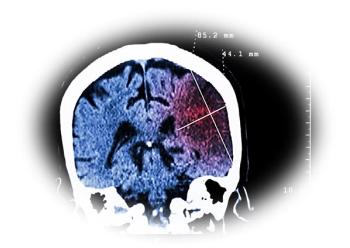
Anticoagulation Challenge: The Post-PCI Patient
A 76-year-old woman with drug eluting stent placed post-STEMI will need an antiplatelet regimen. What would you recommend?
Appropriate anticoagulation for atrial fibrillation (AF) in patients with CHA2DS2-Vasc score ≥ 2 continues to be an important goal for internists and cardiovascular disease specialists. In reality, however, it is more easily said than done. There are a number of challenging special populations whose needs require careful consideration during clinical decision-making. The following is the first of 2 case-based discussions on the best approach to anticoagulation in complex patients with AF.
A 76-year-old woman with a history of hypertension, prior stroke, and paroxysmal AF, currently on warfarin, presents to the emergency department with an anterior STEMI. She is taken urgently to the cath lab, where she receives one drug eluting stent in her mid-left anterior descending coronary artery (LAD).
Question 1. Which of the following would you use for her initial antiplatelet regimen?
A. Aspirin 325 mg load alone. No antiplatelet agent due to warfarin.
B. Aspirin 325 mg load plus clopidogrel load 600 mg, 75 mg maintenance.
C. Aspirin 325 mg load plus prasugrel load 60 mg, 10 mg maintenance.
D. Aspirin 325 mg load plus ticagrelor load 180 mg, 60 mg bid maintenance.
Please click below for answer, discussion, and next question.
Answer: Option B. Aspirin 325 mg load plus clopidogrel load 600 mg, 75 mg maintenance.
In this patient with an acute coronary syndrome (ACS) and percutaneous coronary intervention (PCI), dual antiplatelet therapy is needed to reduce the risk of in-stent thrombosis. There is no data for full dose aspirin alone (option A) in management of patients with ACS and PCI, even in those who are on concomitant anticoagulants, as the risk of acute stent thrombosis is excessive. Prasugrel (option C) is contraindicated by the FDA in this patient who has had a prior stroke. Ticagrelor (option D) also is incorrect as the 60 mg dose is approved for stable CAD patients (not ACS patients) and ticagrelor is associated with increased non-CABG-related bleeding so would not be a good option in patients with prior stroke.
It is the morning after the patient underwent PCI. She is doing well and you are about to see her on rounds.
Question 2. Now that the patient has a “fresh stent” in her “widowmaker” (LAD), what anticoagulant will you recommend for her paroxysmal AF and what antiplatelet regimen for her ACS?
A. Continue aspirin, clopidogrel, and oral anticoagulant for a year (“triple therapy for a year”)
B. Continue aspirin, clopidogrel, and oral anticoagulant for 1-3 months (“triple therapy for a month”)
C. Stop aspirin. Continue clopidogrel and oral anticoagulant (“dual therapy”)
D. Continue aspirin and clopidogrel alone. Stop oral anticoagulation.
Please click below for answer, discussion, and next question.
Answer: Option C. Stop aspirin. Continue clopidogrel and oral anticoagulant (dual therapy)
It has been shown again and again that triple therapy for a year (option A) is associated with an excess risk of bleeding and is not preferred. Similarly, withholding anticoagulation (option D) in this patient with a CHA2DS2-Vasc score of 7 (age, female, prior CVA, HTN, CAD) is also not appropriate. So, we are left to decide between short term triple therapy (option B) or dual therapy alone (option C). We have three trials to guide our practice here.
The findings of
In
Similarly, in
The patient is discharged on clopidogrel and dabigatran 150 mg BID. She has many post- hospital follow-up visits in your office and is doing well without any bleeding. The clock ticks on…
She comes to the office for her 2-year follow-up after her event. She has been doing well on the clopidogrel plus dabigatran you prescribed post-STEMI and is now considered a “stable CAD” patient.
Question 3. True or False. Recommendations from cardiology professional societies conflict on whether long term oral anticoagulation plus aspirin vs oral anticoagulation alone is needed in patients with stable CAD plus atrial fibrillation.
Please click below for answer and discussion.
Answer: Option A. True.
The 2012 European Society of Cardiology AF guideline update4 recommends that in patients with stable CAD or PAD (no ACS or revascularization for greater than at least 12 months) can use OAC alone without aspirin. The guidelines state that concomitant aspirin use indefinitely could increase risk for hemorrhage. On the other hand, the 2011 American Heart Association/American College of Cardiology guidelines for secondary prevention5 recommend OAC plus low dose aspirin. In this patient, with a history of an LAD PCI, I would also be inclined to use the combination of aspirin plus OAC for long-term management.
Please click here for Case II
References:
1. Dewilde WJ, Oirbans T, Verheugt FW, et al.
2. Gibson CM, Mehran R, Bode C, et al.
DOI: 10.1056/NEJMoa1611594.
3. Cannon CP, Bhatt DL, Oldgren J, et al.
4. Camm AJ, Lip GY, De Caterina R, et al.
5. Smith SC Jr, Benjamin EJ, Bonow RO, et al.
Newsletter
Enhance your clinical practice with the Patient Care newsletter, offering the latest evidence-based guidelines, diagnostic insights, and treatment strategies for primary care physicians.


















































































































































































































































































